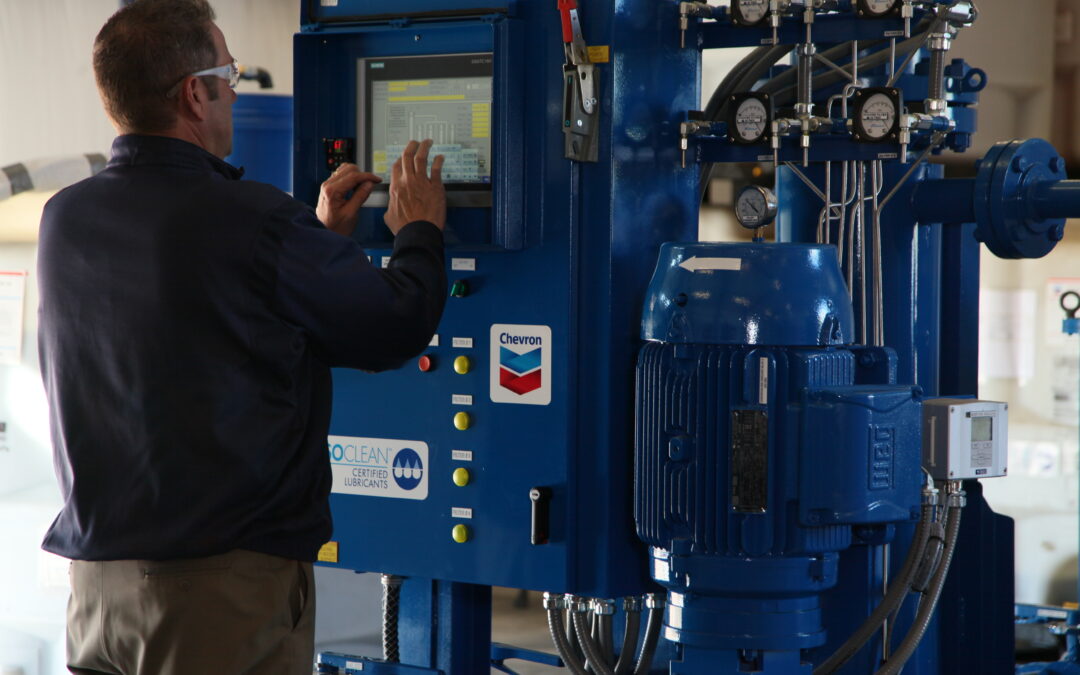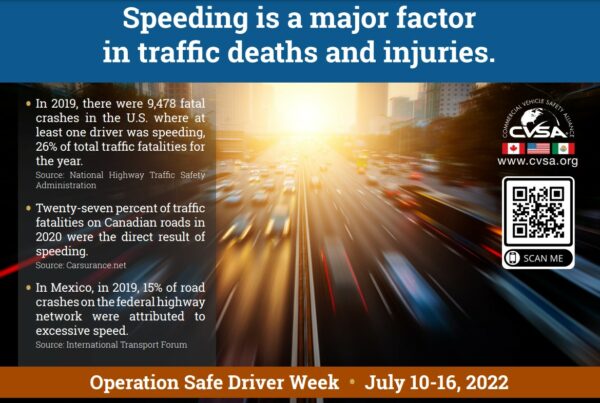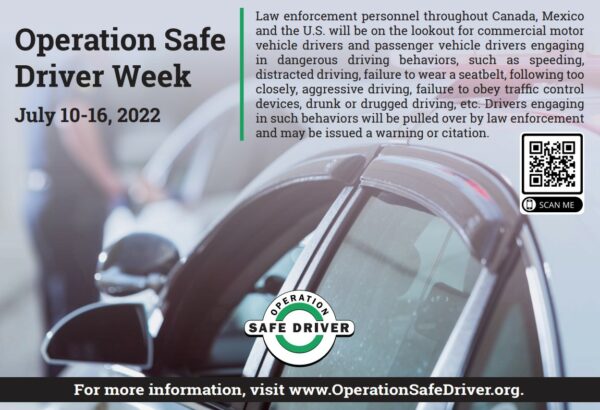×

×
Don't Miss Upcoming Promotions
Enter your email below to stay updated on our latest specials.

TOLEDO, Ohio (April 22, 2023) – Today is Earth Day in the United States, but in the truck tire retread industry, we believe in celebrating the environment every day.
Recycling end-of-life tires is a major challenge for the tire industry and its customers. Around one billion tires reach the end of their useful lives each year. Recycling is part of a process that includes collecting end-of-life tires, sorting them, and giving them a new purpose. Around 65 percent of them are collected for some form of reuse, roughly 70 percent are recycled to recover their materials, and the remaining 30 percent are generally used for energy recovery.
Truck tire retreads deliver huge savings to fleet managers and owner/operators and have a massive impact on the environment.
With two retread facilities in northwest Ohio and southeast Michigan, Shrader Tire and Oil is part of the recycling process.
It is estimated that nearly 300 million tires from cars and trucks are thrown away by Americans each year, but the use of retreads saves hundreds of millions of gallons of oil, and millions of tires continue a useful life rather than being consigned to a tire pile or landfill.
Simply put, retreading tires conserves oil. The synthetic rubber components in a new medium truck tire require about 22 gallons of oil, but it takes only seven gallons to retread that same tire.
Retreading truck tires in the U.S. reduces carbon emissions by 396,000 tons, or 70 percent annually. Finally, nearly 40 pounds of raw material including rubber, steel and carbon black is saved for every retreaded tire manufactured.
Shrader Tire & Oil is the premier tire and lubricant distributor in the Midwest. With locations in Ohio, Michigan and Indiana, Shrader has 15 truck tire and fleet service centers, two state-of-the-art Michelin retread plants, a bulk lubricant operation and a 24-hour emergency road service network.


TOLEDO, Ohio – Shrader Tire and Oil is celebrating its 75th Birthday on Wednesday, April 19, 2023.
In the spring of 1948, Jim and Bernadine Shrader founded Shrader Tire & Oil in Toledo, Ohio. A true family business, their children Jim Jr., Gerri, and Patti filled roles in the company after school. In the evenings, Jim Sr. would instill the importance of values like honesty, integrity and commitment and customer service as the family sat around the dinner table.
The family-owned company has flourished over the years. In 1985, Jim Shrader Sr. handed the company down to his son. Soon Jim Jr. looked to the commercial trucking market as the next area to expand the business. As the company grew, so did the Shrader family; many of which became the third generation to run the business.
In the year 2000, Jim Shrader Jr. handed the company down to his son, Joe Shrader. Like most of our staff, Joe rose through the ranks in the business, gaining valuable experience along the way by working in all facets of the company.
Even though the Shrader business model has shifted over the years, the foundation and core values that Jim & Bernie believed in still hold true today and practiced by third and fourth-generation members.
Today, with 15 truck tire and fleet service centers, two state-of-the-art Michelin retread plants, and four bulk lubricant operations larger than ever, Shrader Tire & Oil has become the premier tire and lubricant distributor in the Midwest.
By aligning ourselves with Chevron & Michelin, Shrader brings value to our customers for less. In addition to providing the highest quality products in the industry, Shrader offers the best service in the region. Our knowledge and expertise go well beyond our product lines. We strive to create loyal partnerships with our customers while providing measurable solutions for lowering operating costs through our high-performance products and extreme customer service.

As is often pointed out, ensuring lubricant cleanliness and avoiding lubricant contamination are essential to maximizing equipment life. Microscopic particulates in lubricants can reduce the useful life of equipment components and, in the worst cases, lead to sudden equipment failure, unplanned downtime and even safety risks.
The problem for equipment operators is that even new lubricants can become contaminated in transit, and may not meet the equipment manufacturer’s recommended ISO cleanliness standard upon delivery. As a result, many industrial operators subject all new oils they receive to on-site lubricant filtration. However, as we detailed in a recent Technical Bulletin, Impacts of Filtration on New Lubricant Performance, figuring out the right filtration method for your operations – if there is one – can be a time-consuming, expensive process without assurance of success. There is no “standard” filtration method or medium that will ensure that all oils used in an industrial operation will meet the cleanliness standards of the equipment for which they are intended without compromising performance.
To understand why filtration can be problematic, it’s helpful to understand the make-up of finished lubricant formulations. Finished lubricants contain a variety of additives, such as dispersants and detergents, demulsifiers, corrosion and foam inhibitors, and more. Some additives are fully dissolved in the oil, while others are dispersed in the oil as solid matter measured in microns. Depending on their molecular size or chemical composition, some additives may be at risk of being removed from the oil during filtration. Filters can remove additives by mechanical blockage – meaning that the additive particles are larger than the filter pores – or by adherence to the filter element, which can remove particles smaller than the filter’s rating. Moreover, additives that may be dissolved in the oil or microscopically dispersed can have chemical reactions with contaminants, such as water or particulate matter, causing them to form agglomerates, salts or gels that do not pass through the filter.
A crucial watch point when filtering lubricants is foam performance. Modern foam inhibitors may be more stable in finished lubricants, as they are more finely dispersed in the oil, but still remain vulnerable to removal by filtration. Filtration can remove enough of the oil’s foam inhibitors to cause excessive foaming. Filtration can also adversely affect a lubricant’s ability to shed water when demulsifiers are removed. In either case, a heavily filtered oil may not perform as expected, putting the equipment at risk.
It’s tempting to select a low-micron, high-efficiency filter and perform the filtration under ambient conditions – for example, using a portable kidney loop on a bulk or day tank. This might allow operators to reach or even exceed cleanliness targets, but it might also deplete critical additives and have an adverse impact on post-filtration performance.
Particular care must be taken to avoid damaging the lubricant while it is being cleaned. In order to mitigate the risk of additive removal, operators need to understand the chemistry of the lubricant being filtered, along with filtration parameters such as operating conditions, process temperatures, filter media and flow rate. These parameters need to be standardized and tested thoroughly to ensure no harm is done to the lubricant. Since the results of filtration are highly application- and product-specific, it is important to develop an effective, repeatable process. A lack of process consistency can easily lead to unexpected results and damage the lubricant.
Our technical bulletin details a wide variety of tests that have been performed to determine the effectiveness of different filtration methods on specific lubricants under a range of conditions. It is essential information for anyone considering an investment in on-site filtration as a solution for lubricant cleanliness. A more efficient solution, however, is having your lubricant supplier perform the necessary testing and certify that each new, fully formulated oil meets the ISO cleanliness standards for its application upon delivery. Contact us to learn more about Chevron’s ISOCLEAN® certification program.

TOLEDO, Ohio (Aug. 12, 2022) — Interested in reducing downtime, lowering maintenance costs and extending your equipment life? Of course you are!
Healthy fluids are critical to the performance of a heavy-duty vehicle, whether it’s a long-haul truck or an excavator on a construction site. From the engine oil to the coolant to the transmission, gear and axle fluids, contaminants can interfere with a vehicle’s smooth and productive operation. In fact, fluid contamination is a leading cause of downtime and higher maintenance costs.
There’s a common misconception that, simply by changing out the fluids at the OEM’s recommended intervals, you are doing enough to ensure your fluids are clean. There are two issues with that. First, you are missing the opportunity to extend drains well beyond the manufacturer’s recommendation, which is increasingly possible with today’s diesel engine oils. Longer drain intervals are a key strategy in reducing maintenance costs. Secondly, contaminants in the oil can be indicators of problems elsewhere in the vehicle. For example, traces of metal such as copper or aluminum in the oil is a sign that some metal parts, bearings or components are experiencing wear and need to be inspected.
Those are among the reasons that Chevron and other lubricant suppliers wholeheartedly recommend a systematic, in-service fluid analysis program for fleets of all sizes, even small owner/operators, and across both on- and off-highway segments. A fluid analysis program is far easier to implement than you might think. And far from being an added expense, it is an investment that will likely pay you back in the form of reduced downtime, lower maintenance costs, and extended equipment life.
A fluid analysis program typically involves three parties: the fleet maintenance manager, a laboratory that actually performs the analysis, and a partner who can help you analyze the lab’s findings and determine the appropriate action – most likely your lubricant supplier. (Chevron provides this service to our customers free of charge.)
The fleet manager’s job is to take oil samples on a regular schedule and send them to the lab. To ensure you get reliable results, it’s important to follow proper sampling procedures and use the right equipment. Simply opening the drain plug and capturing whatever flows out is not going to give you satisfactory results. The oil may get contaminated from dirt in the environment or even lint from the rag used to open the plug (something we commonly see). The proper bottle, tubing and vacuum pump for obtaining samples are inexpensive and readily available from a variety of sources. For the best representation of the condition of the fluid, take samples from as close to the middle of the fluid reservoir as possible, rather than the top or the bottom. Newer vehicles have been designed to accommodate this.
Just as important as the quality of the sample is the data you provide with it. Make sure you have the accurate unit number and the name of the specific product being used, which the lab will match against its own sample.
Labs can turn the analysis around in as little as 24 hours if needed. You will receive a report that is color coded – red, yellow or green – depending on the severity of the findings. Green means you can continue to operate and monitor the equipment as usual. Yellow indicates some cautionary notes you should be aware of, and red means you have a problem that needs attention. One of the benefits of doing sampling on a regular schedule is that you can see trending over time and whether a problem is getting worse, making it easier to pinpoint the source. As noted earlier, you can share the findings with your lubricant provider, who can help you understand the report and should be able to help you determine what to do if the fluid or additives are showing signs of contamination, metal wear, or degradation.
While this type of program pertains primarily to engine oil, it’s worth quickly noting the importance of coolant analysis as well. Fortunately, it entails far fewer steps and can usually be done in-house. You can use test strips that match the specific coolant technology you are using to check the additive and Ph levels. You can use a refractometer to test the freeze point. The simple tests, however, are the “visual and smell” tests – if the color is close to the original when the fluid was installed, and the odor is not unusual, your coolant is probably in good shape.
Given the relatively low cost and the potentially high payback, it makes sense to invest in a fluid analysis program – a proven and effective way to make sure your equipment is in top operating condition and can perform beyond its life expectancy.



This year’s focus for Operation Safe Driver Week is speeding.
Safe Driver Week began Sunday, July 10, across the United States, Canada, and Mexico. Law enforcement will be on roadways throughout this week watching for commercial motor vehicle and passenger vehicle drivers engaging in unsafe driving behaviors, such as speeding, distracted driving, following too closely, improper lane change, drunk or drugged driving, etc.
At Shrader Tire and Oil, safety is always our No. 1 priority, whether its delivering products to one of our 14 fleet stores to getting your fleet back in service.

The Commercial Vehicle Safety Alliance’s (CVSA) Operation Safe Driver Program was created to improve the driving behaviors of all drivers and reduce the number of crashes involving commercial motor vehicles on our roadways through educational and traffic enforcement strategies. Operation Safe Driver Week was created by CVSA with support from federal agencies in Canada, Mexico and the U.S., the motor carrier industry, and transportation safety organizations.
This year’s campaign encourages everyone to slow down and travel at a safe speed.
“This safe driving initiative and campaign focuses specifically on drivers’ actions – whether it’s something a driver did, like speeding, or something they didn’t do, such as not paying attention to the driving task,” said CVSA President Capt. John Broers with the South Dakota Highway Patrol. “This focus on drivers’ behaviors is our effort to identify and educate drivers who are operating dangerously on our roadways, with the goal of preventing crashes from occurring.”

Earlier this year, the U.S. Department of Transportation’s National Highway Traffic Safety Administration (NHSTA) released its latest annual traffic crash report, showing that 38,824 lives were lost in traffic crashes nationwide in 2020 – the highest number of fatalities since 2007. And while the number of crashes and traffic injuries declined overall, fatal crashes increased by 6.8%.
Among the alarming statistics in NHTSA’s report was the key finding that speed-related fatalities increased by 17%. Consequently, speeding, in particular, will be a dangerous driving behavior that officers will identify and target during Operation Safe Driver Week.
“The rising fatalities on our roadways are a national crisis; we cannot and must not accept these deaths as inevitable,” said U.S. Transportation Secretary Pete Buttigieg.
Shrader Tire & Oil is committed to safety and welcomes the special focus this year on Safe Driver Week.